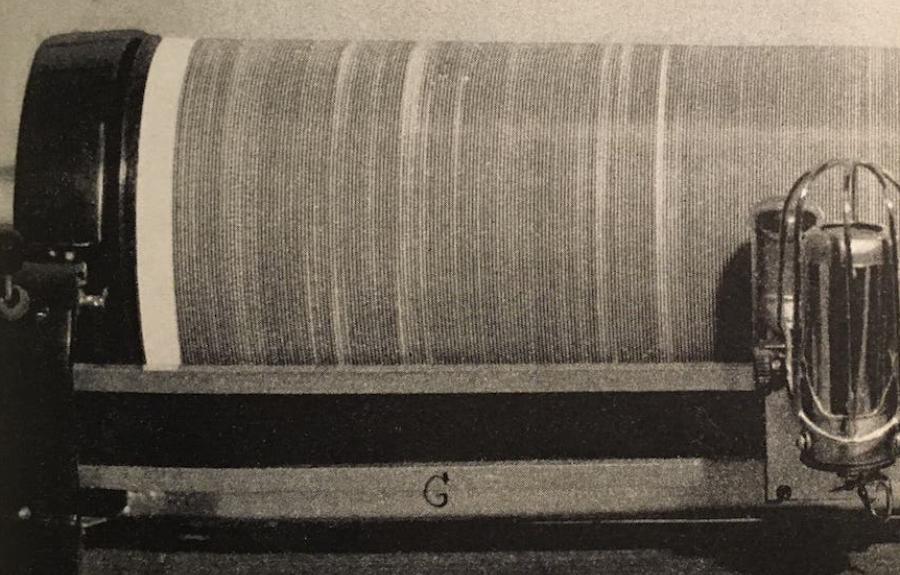
In 1937, a Russian refugee in Paris named Georges A. Rubissow described the potential uses of the fotoliptófono, or photoliptophone, in an issue of Radio-Craft, one of the many magazines edited by Hugo Gernsback. Although this Argentine invention might have seemed as fantastic as one of the nonexistent machines imagined in Amazing Stories, the publication that would help earn Gernsback the epithet “the father of science fiction,” Fernando Crudo’s device was a “talking newspaper,” as it was often labeled in English, that actually worked. And it aspired to a global reach not unlike that of the intercontinental circuits of communication used to produce the magazine piece, which speculated about the dramatic changes the photoliptophone might bring about and thereby recalled Edison’s earliest pieces on the future of the phonograph.
The photoliptophone, whose name is derived from the combination of photography, lithography, and phonography, employed an optical process to record and reproduce sound. But unlike film methods that also used variations in light to render sound, Crudo’s machine could work with regular paper or even newsprint, making it a remarkably affordable option for widespread reproduction for those who possessed the right equipment. Yet while a newspaper in France included a full-page recording in one edition and publications on several continents reported on the promise of the device, it never found the success Crudo had hoped for and instead was largely forgotten. The Argentine researchers Ianina Canalis and Jorge Petrosino have, however, digitally restored some of the photoliptophone’s recordings and reconstructed some of its history, which begins in the 1920s and ends two decades later in a phonetics laboratory.
Mercedes V. Álvarez Puebla de Chaves’ Problemas de fonética experimental (Problems of Experimental Phonetics), from 1948, includes some of the last recordings produced with the photoliptophone. Originally intended to operate as a talking newspaper, it now provided the opportunity to visualize vocality as Álvarez considered questions of timbre and regional intonation. As a result, what had once been a communication device was turned into a measuring machine, and in much the same way a technology that had briefly traveled the world ended up only compiling material in a national archive. Transmission, in other words, gave way to transcription, which often left less room for sustained attention to the aural.
This trajectory of the photoliptophone, which is to say its gradual silencing despite being arguably the most successful experiment in phonography actually taking place on paper, naturally raises important questions about how new technologies circulate as well as why they can fail to catch on. But it can also lead us to ask what kinds of crucial sonic work a page might perform even without any possibility of becoming audible. After all, newspaper articles and other texts could help train the ears that would identify and thereby reproduce the acoustic characteristics Álvarez sought to analyze. Although Rubissow had suggested that with the photoliptophone “authors will change their writing,” it ultimately reminds us how a regular page can make readers change their listening.
Sam Carter is a PhD candidate in the Department of Romance Studies whose research examines the intersections of literature, migration, and listening in Latin America. His work has appeared or is forthcoming in Sounding Out!, Latin American Textualities, and the Revista Hispánica Moderna.
